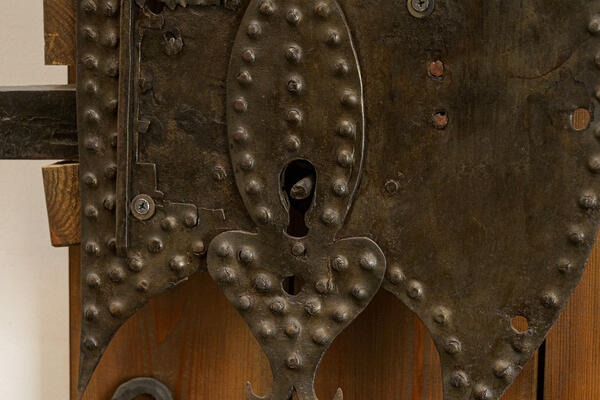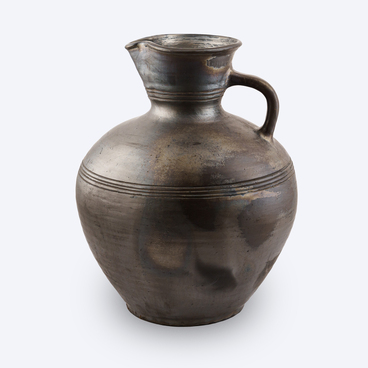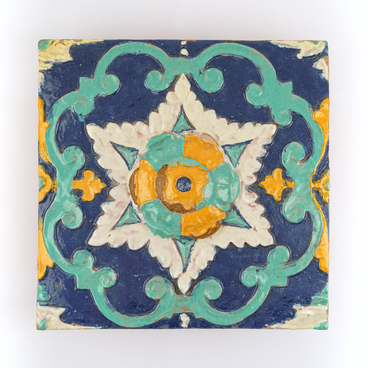The exhibition presents a large-sized rim lock with a shield in the shape of an ax. In the center of the lock on the front side there is a decorative figurative overlay, in the lower part of which there is a slot for a key. A metal rod protrudes from it. There is a decorative pattern in the form of small round bulges on the edges of the shield and on the shaped overlay. On the reverse side of the shield there is a lock mechanism with a thick rod-shaped latch.
Ax-shaped locks got their name (“sekyrny” in Russian) from the name of the weapon. The shield of such a lock, connected to the mechanism by riveting, resembles an ancient weapon in the form of an ax with a long blade — sekira. Such an ax usually has a blade in the form of a crescent sharpened on the convex part, 20–30 centimeters long. Such an ax sometimes has a hook on its edge, intended for a foot soldier to pull a rider off a horse. The battle ax has been known since the Bronze Age. It was widespread in different parts of the world, including Russia, and was used mainly by foot warriors.
Such locks were used to close the doors of churches, city gates and houses of rich merchants. They were distinguished by special artistic motifs in the form of engraved circles, zigzags around the perimeter and perforated patterns in the center, under which tinted mica of orange and light green color was often placed.
The ax-shaped locks were also decorated with iron overlay plates — “burs” — and fretted overlays — “cloaks”. Sometimes the whole lock was painted in orange or green colors. Such locks were not known in pre-Mongol Rus. Perhaps, the work of craftsmen embodied the need of Russian people to protect themselves from new attacks: as if subconsciously putting a double protection, people tended to close their homes not with a simple lock, but with the one of aggressive form, a “warning” lock. Such locks are not found in Western European tradition. The ax-shaped locks were used until the end of the 18th century, especially in the provinces: they are displayed in many museums.
The ax shape of the lock reminded of the cruelty of
punishment in case of attempted burglary and theft: that is why such devices
are sometimes called “warning” locks. The decoration with geometric patterns of
minor parts of the mechanism, such as a spring, post, and bolt, is
characteristic of locks of the 16th–17th centuries.





